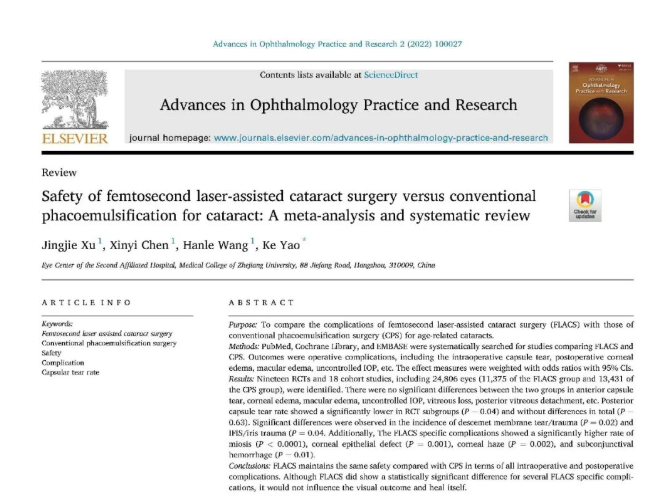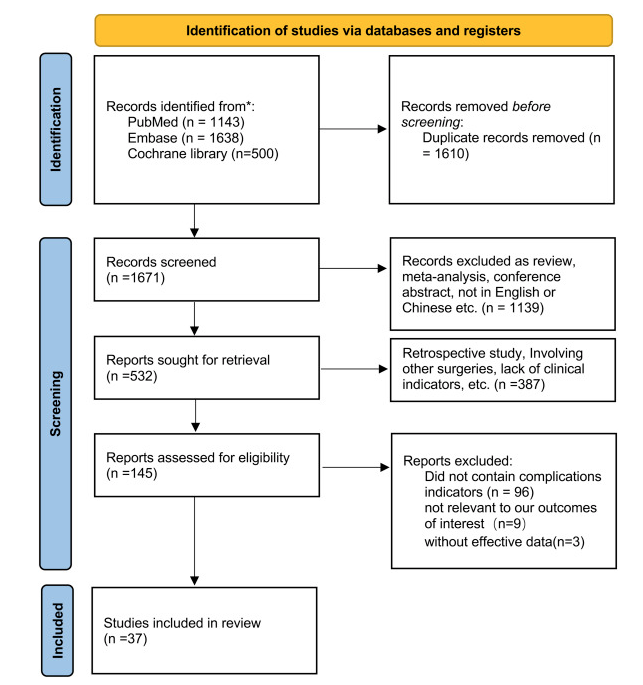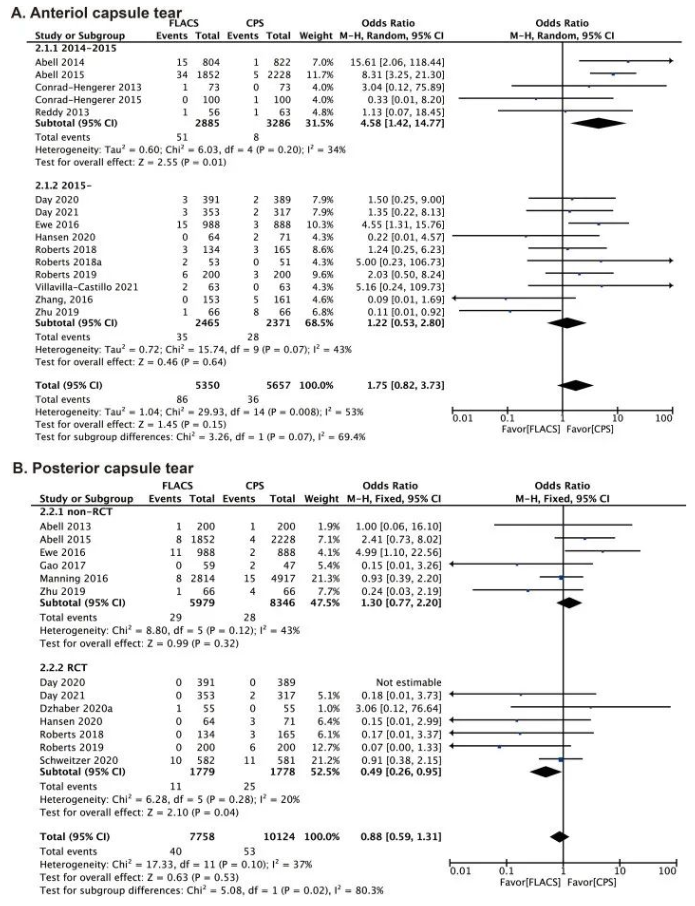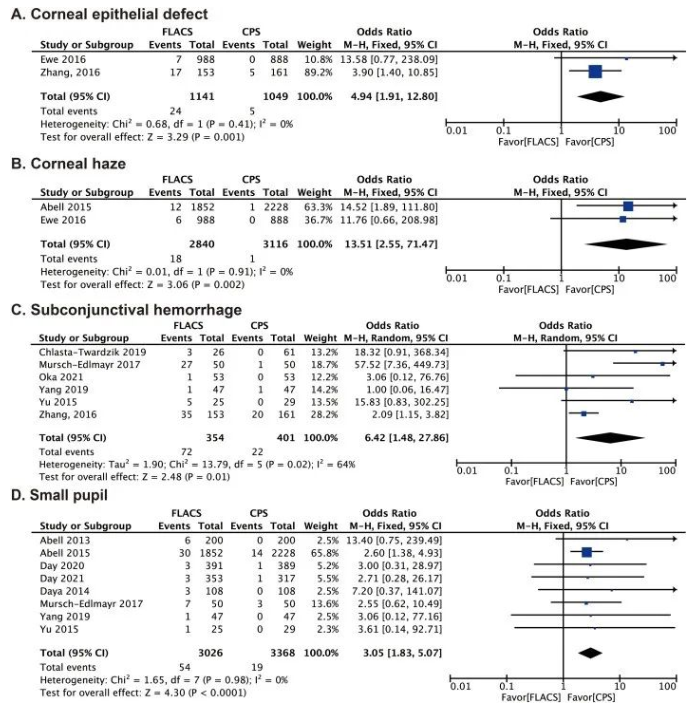The following article comes from AOPR ophthalmology practice and research progress, the author AOPR

Recently, Professor Yao Ke's research team published a meta-analysis and systematic review paper entitled "safety of femtosecond laser assisted cat surgery versus conventional phacoemulsification for cat: a meta-analysis and systematic review" in Elsevier and the journal "advances in ophthalmology practice and research" of Zhejiang University Press. Professor Yao Ke is the corresponding author of the paper, Dr. Xu Jingjie is the first author of the paper, and Dr. Chen Xinyi and Dr. Wang hanle are the co first authors.
01
Article guide
Cataract is the first blinding eye disease in the world. At present, surgery is the only exact and effective method for the treatment of cataract. With the extension of life span and the improvement of living standards, patients not only pursue "seeing clearly", but also pursue "seeing well and comfortable". These demands promote the transformation of cataract surgery from vision restoration surgery to refractive surgery, and enter the era of refractive cataract surgery.
In 2010, femtosecond laser (FSL) was approved by FDA and applied in cataract surgery to provide higher accuracy, safety and postoperative refractive effect. However, its safety is still controversial, such as whether femtosecond laser cataract will increase the risk of anterior / posterior capsular tear? Will it cause the intraocular lens to move, resulting in poor postoperative visual quality? In this study, we comprehensively reviewed the incidence of complications between femtosecond laser and traditional phacoemulsification. Through meta-analysis, we comprehensively evaluated the safety of femtosecond laser, and provided suggestions for the choice of main knife and patients' surgical methods.
A total of 19 randomized clinical trials (RCTs) and 18 high-quality prospective cohort studies were included. A total of 24806 eyes were included (11375 eyes in femtosecond laser cataract group and 13431 eyes in traditional phacoemulsification group).
1. Capsule related complications
Bag quality is the key factor affecting the postoperative effect. It has been suggested that the incidence of anterior capsular tear in femtosecond laser cataract surgery is high. Therefore, we explored the rupture of anterior capsule. The results showed that the tear rate of anterior capsule in femtosecond laser cataract surgery before 2015 was significantly higher than that in traditional phacoemulsification group, and there was no difference in the risk of anterior capsule tear between the two groups. We believe that this is related to the software upgrade of femtosecond laser system, the optimization of surgical parameters and the increase of operator experience.
2. Femtosecond laser related surgical complications
In femtosecond laser surgery, the rapid release of laser energy and the direct contact between the instrument and the ocular surface will induce a series of specific complications. We found that the incidence of intraoperative mydriasis, subconjunctival hemorrhage, corneal epithelial defect and postoperative corneal opacity increased in the femtosecond laser group. However, with the further understanding of femtosecond laser cataract surgery, these complications can be effectively prevented. Such as preoperative use of NSAID drugs to prevent the risk of intraoperative mydriasis. Corneal epithelial injury often depends on the operator's learning curve and can heal itself within 1 week without affecting the postoperative visual quality.
3. Other common postoperative complications
In addition, the article also comprehensively discusses other common complications. The results show that the use of femtosecond laser for corneal incision can significantly reduce the incidence of corneal posterior elastic membrane tear or endothelial injury. In addition, for iris relaxation syndrome / iris injury, macular edema, retinal edema and other complications, femtosecond laser cataract surgery has similar safety to traditional phacoemulsification.
Conclusion:
Our meta study shows that femtosecond laser assisted cataract surgery has similar safety in all intraoperative and postoperative complications compared with traditional phacoemulsification.
02
Paper map

Fig 1. PRISMA 2020 new system evaluation flow chart, including only the search of database and registry

Fig 2. Forest plot comparison of capsule tear rate after FLACS and CPS treatment. A. Tear of anterior capsule; B. Posterior capsular tear

Fig 3. Forest chart comparison of the incidence of FLACS specific complications after FLACS and CPS treatment. A. Corneal epithelial defect; B. Corneal opacity; C. Subconjunctival hemorrhage; D. Small pupil
Reference to this article:
Xu J, Chen X, Wang H, Yao K. Safety of femtosecond laser-assisted cataract surgery versus conventional phacoemulsification for cataract: A meta-analysis and systematic review. Adv Ophthalmol Pract Res 2022; 2(1) doi: 10.1016/j.aopr. two thousand and twenty-two point one zero zero zero two seven
https://doi.org/10.1016/j.aopr.2022.100027